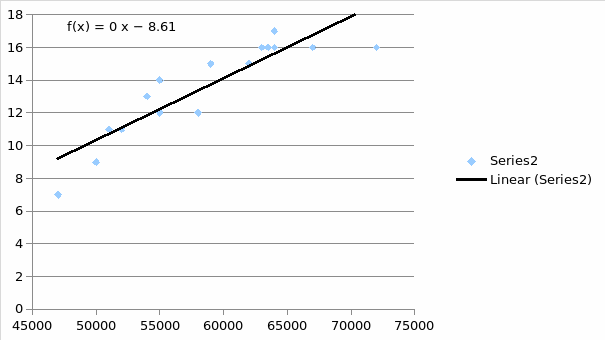Benefits of a Variable in Developing and Examining Models
Seeing that the ability to change throughout the study can be viewed as the basic feature of a variable, it is reasonable to assume that the subject matter may help identify the correlation between the variables available and, therefore, serve as the basis for making a trustworthy forecast. When developing a model, one should incorporate variables so that a certain correlation between the existing factors could be located, and the prognosis could be made (Watson 240).
Variables may assist in modeling the possible scenarios, which may occur to the participants involved and affect the subject of the study. Hence, variables allow for not only forecasting but also for identifying avenues for addressing the potential negative outcomes. Thus, variables are the foundation for a trustworthy study and the development of a viable model that can be applied to a variety of situations to solve a number of problems (Wind and Green 44).
Purpose of Simple Linear Regression and Scatter Diagrams
By definition, a simple linear regression is a statistical tool, which “is appropriate to understand the association between one independent (or predictor) variable and one continuous dependent (or outcome) variable” (“Correlation and Linear Regression” par. 68). The simple linear regression takes the shape of a straight line that allows for locating the correlation between two specific points on the scale (“Correlation and Linear Regression” par. 70). The key purpose of a simple linear regression, therefore, can be defined as the evaluation of the association between the variables under analysis.
The tool in question can be used for assessing the effects, which a change in management techniques may have triggered. For instance, the correlation between the number of sales and the number of updates of the company’s website can be viewed as a prime example of the scenario in which the simple linear regression model is required for the analysis (Lee 115).

As the chart provided above shows, there is a strong connection between the variables, such as the number of site updates per month and the number of customers. Though the simple linear regression model is a rather basic tool for a business management analysis, it should still be used as one of the essential means of interpreting data and forecasting further outcomes.
Multiple Regression Analysis and Discussion
Another essential tool for analyzing statistical data, multiple linear regression is a tool that helps model relations between three or more variables, one of them being the responsible one. The subject matter is typically defined as a “general system for examining the relationship of a collection of independent variables to a single dependent variable” (Bazan and Bicharra 758) and can be considered an important tool in the statistical analysis that involves the evaluation of multiple factors and their influence on the research subject.
The model in question can be used in nearly any field (Bazan and Bicharra, 760). For instance, the model under analysis may be viewed as a tool for improving a business management strategy. Particularly, the shift from a certain model, such as the authoritative leadership approach, to the options such as the transformative leadership approach, transactional leadership, and the laissez-faire style, can be viewed as an example. Therefore, as a statistical tool, multiple regression analysis is a primary means of forecasting data (Cohen, West, and Aiken 430).
Works Cited
Bazan, Ana L. and Karim Bicharra. Advances in Artificial Intelligence. Berlin, Germany: Springer, 2014. Print.
Cohen, Particia, Stephen G. West, and Leona S. Aiken. Applied Multiple Regression/Correlation Analysis for the Behavioral Sciences. New York City, New York: Psychology Press, 2014. Print.
Correlation and Linear Regression. n. d. Web.
Lee, Garry. E-Commerce, E-Business and E-Service. London: CRC Press, 2014. Print.
Watson, Sara. The Left Divided: The Development and Transformation of Advanced Welfare States. Oxford: Oxford University Press, 2015. Print.
Wind, Yoram and Paul Green. Marketing Research and Modeling: Progress and Prospects: A Tribute to Paul E. Green. New York City, New York: Springer Science & Business Media, 2013. Print.